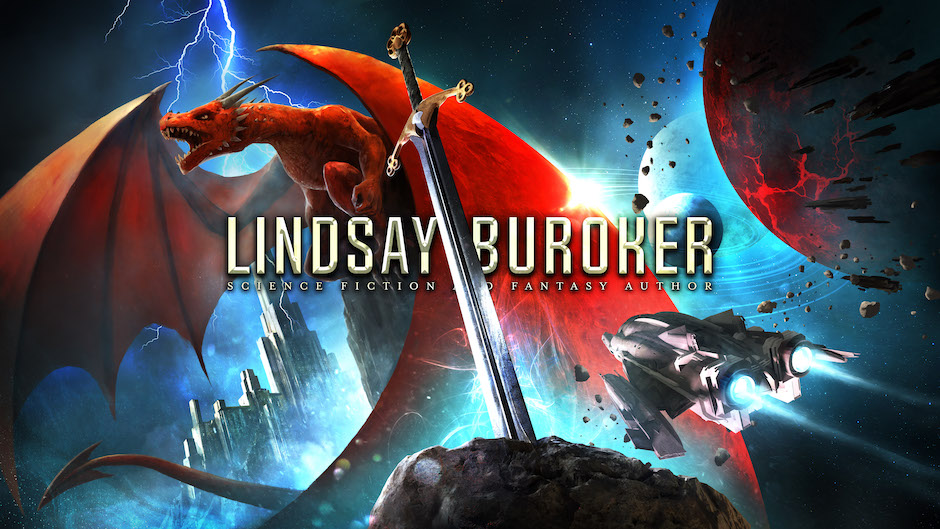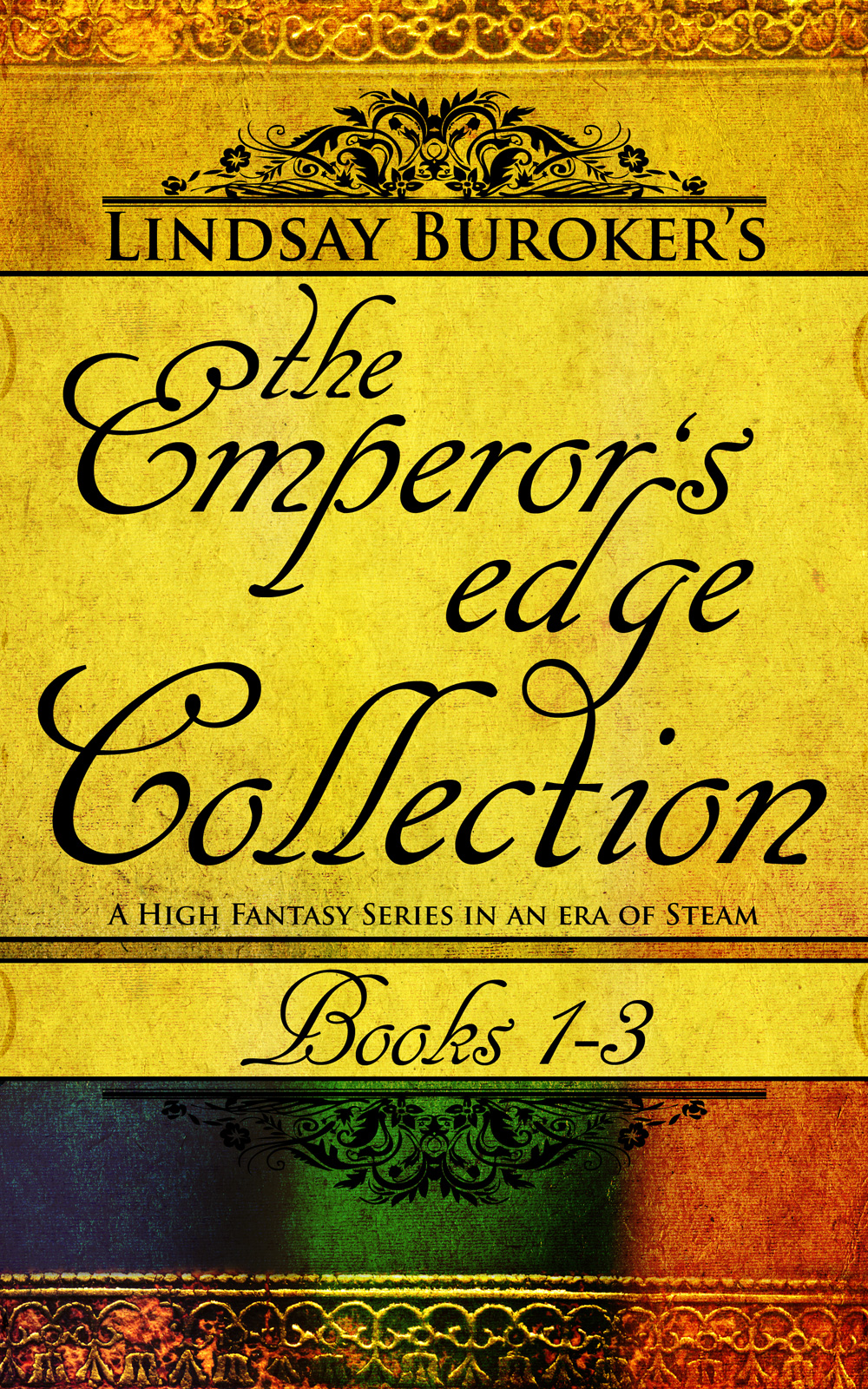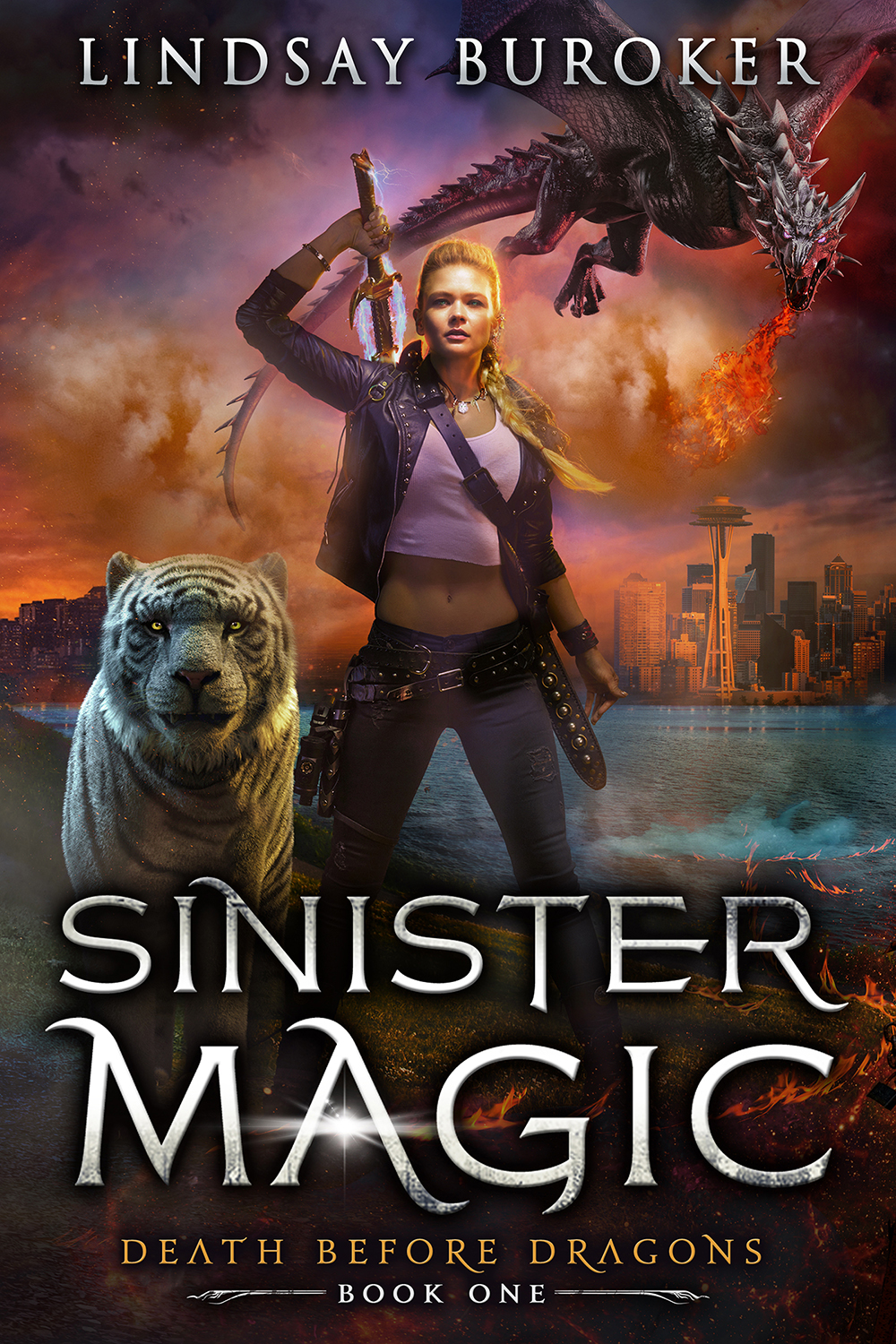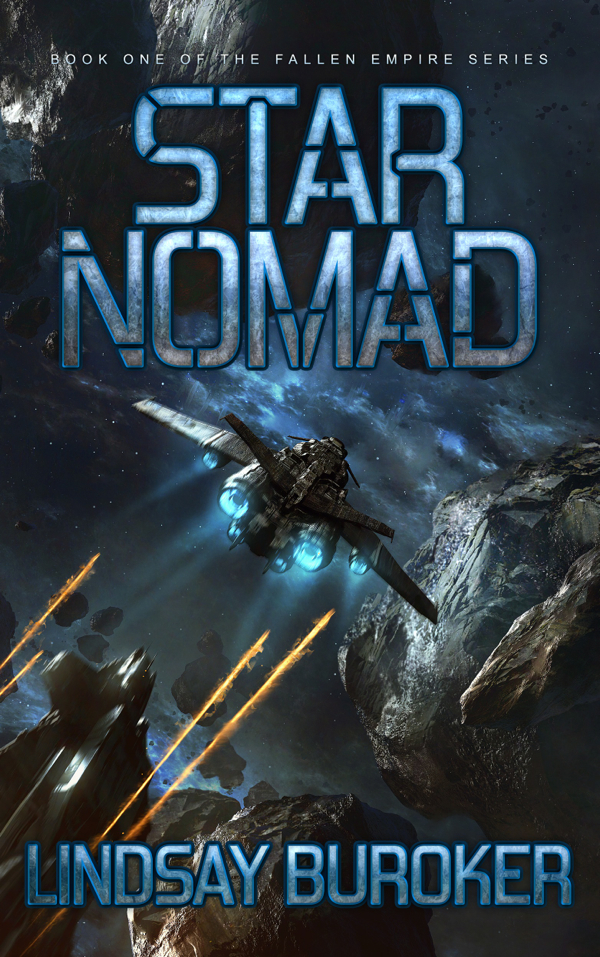A few months ago, I changed my Twitter bio from “indie fantasy/steampunk author” to “full-time indie fantasy/steampunk author.” Apparently a couple of people actually read that Twitter bio, because I’ve had questions about it.
–You really earn a living from your ebooks?
–How many books do you have to write to do that?
–Are you a bestseller?
–If not, how many do you have to sell?
–How do I sell that many books?
I’m going to try to answer some of those questions today, though before I get started, let me admit that I’m not really there yet, insofar as being confident that writing books is all I’ll ever need to do to pay the bills and eventually purchase a suitable super-villain lair.
I feel like I’m on the right path, but I currently rely heavily on Amazon for my income (sales in the Kindle Store make up about 85% of my earnings with Barnes & Noble accounting for 10% and Smashwords and partners making up the last 5%). If Amazon decided to cut its royalty rates tomorrow, giving indie authors 35% instead of 70% for instance, that would make a huge difference in my income. Or, if Amazon made a change in its algorithms to favor traditionally published authors over indies or some such, that could make a big difference too.
Because of that potential for volatility, and the fact that I’ve only been at this publishing thing for 18 months or so, I’m not going to make any claims that this is the definitive guide to quitting the day job and becoming a career writer. I’ll just share what I’ve been doing and what my grand plan is (yeah, I have a grand plan — what, you thought someone scoping out villain lairs wouldn’t?).
What I’ve done so far:
Write books, short stories, and novellas
Duh, I know, but it’s hard to get momentum going when you only have one or two books out. It usually takes more exposures to your work for readers to decide they’re fans. Also, when you’re working hard on promoting a book, you get more return on your effort if there’s a series people can go on to buy, rather than a single title.
In December of 2010, I started out with The Emperor’s Edge and, a month later, Encrypted, two loosely related fantasy novels I’d written but never shopped around to agents (word on the AgentQuery site was that nobody was particularly interested in secondary world fantasy).
Sales were slow at first (so you’re not alone if that sounds like you). I had some luck running an advertising campaign on Goodreads and giving away a free short story starring my Emperor’s Edge characters (though, at the time, I didn’t know how to get that free story into Amazon). What next? I wrote. A lot (by my standards anyway). I published the first Flash Gold adventure (a novella) that spring, the second EE book in June, another Flash Gold novella that summer, and the third EE book in November.
I had some good months last summer where I saw the potential of e-publishing and started to think I could do this for a living someday, but it wasn’t until Book 3 in my series came out that things really picked up and I started getting more sales and a bunch of fan mail too. (Very cool, by the way. Who woulda thunk self-published authors would get fan mail?)
So far in 2012, I’ve published a short story, a third Flash Gold novella, and, at the end of April, my fourth Emperor’s Edge book. The final numbers aren’t in for May yet, but, thanks to that new release, it’s going to be my best month ever. And by “ever,” I mean ever. I was self-employed before this, and made a pretty good living from my old job, but May will trump what I earned in my best months at the old job. I don’t know if the entire year will be my best ever, though I’d guess not (even though I’m writing a lot, I can’t put out a new release every month, and, once the core fans catch up with the series, sales naturally dwindle to match what the rest of the books in the series are doing). Still, I could see 2013 being pretty awesome if the trend continues.
The theme here is that I’m writing a lot and putting out something new, even if it’s just a short story, every couple of months. Can you make a living as an indie author if you’re only publishing one novel a year? Sure. It’s just going to take longer. Of course, if you’re one of those lucky (or was it unlucky?) writers with eight trunk novels ready to be published, it might take less long.
By the way, I’ve never been in the Amazon Top 100 (or in the Top 1000 for more than a couple of days), and I’m not particularly visible even in my sub-categories (epic fantasy/historical fantasy) in the Kindle Store. You don’t have to be an uber seller to make a living, though you have to, of course, have characters and/or plots that capture people’s imaginations and turn them into fans (not everyone has to like your books but enough people do so that you get good reviews and you word-of-mouth “advertising” from readers). If you have ten books priced at $4.99, and they sell 200 copies a month, you’re earning over $6,000 a month.
I don’t mean to make it sound like it’s easy to write ten books or sell 200 copies a month of a title (I would have rolled my eyes at such a comment 16 months ago), but, right now, the numbers tell us that making a living as an indie author is a lot more doable than making a living as a traditionally published author (where the per-book cut is a lot smaller). If you’re mid-list as an indie, and you have a stable of books that are doing moderately well, you’ve got it made in the short-term. If… you’re building your tribe along the way, you ought to have it made in the long-term too (more on that below).
I’ve given away work for free
What else have I done that’s made a big difference? Last November, when I released Book 3, I started giving away the first book for free. That got a lot more people into the series, people who went on to pick up Books 2, 3, and 4. I also made the first Flash Gold novella free.
I’ve tried a lot when it comes to online promotion, everything from guest posts to book blog tours to contests to paid advertising, and nothing compares with having a free ebook in the major stores. Not only will people simply find it on their own, but it’s so much easier to promote something that’s free. If you do buy advertising (and I do from time to time), it’ll be the difference between selling 25 copies and getting 5,000 downloads (i.e. 5,000 new people exposed to your work), because people live in hope that they’ll find something good amongst the free offerings.
I’ve heard authors argue that most people who download free ebooks just collect them, like shiny pebbles on the beach, and that they never even bother to check them out. I say B.S. to that. I’d bet money that most people try the books they download; it’s just that they find most of them don’t pique their interest. Maybe they’ll download 50 or 100 ebooks and only find one where they want to read the whole thing. That’s fine. That just means you have to make sure your story is entertaining enough to be The One.
The power of the series:
I should mention here that, while giving away a free ebook can be huge, it’s key that the story be part of a series, or at least strongly related to the book(s) you’re trying to sell.
I just don’t see people having the same sorts of results when their free novel or short story isn’t related to the rest of their work. Oh, it might help a little, but not the way a Book 1 that ends on a cliffhanger will. (My first book admittedly doesn’t end on a cliffhanger, but it does have a teaser epilogue to let folks know that there’s a lot more to come.)
Just to be clear here, the free ebook isn’t just about hooking people or tricking them into buying more books. It’s about good will too. It’s about letting people try your work for free, at no risk. It’s about starting your relationship with new readers off on a good foot. If they like the book, maybe they’ll buy the next one. Maybe they’ll share the free one with a friend. Maybe they’ll leave a nice review on Amazon. But if they don’t like it, they’ve lost nothing but a little of their time. You don’t get the resentful “I can’t believe I wasted $8 on this” kind of comments. If they’re disappointed, people are more likely to think, “Well, it was free; what did I expect?” But if they like it, they feel like they won a prize in a lottery.
This is why I plan to continue to give work away for free. It’s also why I don’t worry about it if my books appear on piracy sites (apparently they do now — I feel popular!).
Have you ever watched Neil Gaiman’s comments on piracy? It’s short. Go ahead and watch it. I’ll wait.
Another point I want to make, for those who are thinking, “Oh, I’ll just make some old trunk story free because it’s too short to sell anyway,” or “I’ll just give away some sample chapters,” is that what you give away for free should be great. Great in your mind, anyway. Art is subjective after all, so one person’s great is another person’s garbage. But this is your chance to wow people and turn them into fans. Don’t save your best stuff for the readers willing to buy. Give away your best stuff, and people will buy the rest because what they got made them fall in love with your characters, or your world, or your masterful fight scenes, or the way you write twist endings.
The only way to get someone’s attention (and that’s what we’re all looking to do as new authors), and to make sure your free offering is the one out of 50 or 100 that someone actually reads, is to stand out. Give ’em your best.
I’ve tried to cultivate a fan-base, or, as Seth Godin might call it, a tribe
I see a lot of indie authors trying to figure out exactly how Amazon’s algorithms work so they can find a way to take advantage of a loophole and get catapulted up the bestseller listings. To this ends, I’ve seen authors try to get a hundred people to buy their book in the same hour. I’ve seen them pay for 5-star reviews on Fiverr. I’ve seen them participate in massive book-tagging threads on forums. I’ve seen them go exclusive with Amazon in hopes of great rewards from KDP Select. I’ve seen… lots.
And, hey, I’m not above taking advantage of an opportunity myself, but I’ve always believed that any victories achieved through these sorts of tactics would be short-lived (and, in most cases, I’ve seen that to be true). That’s why I’m trying to focus on getting my work out there to the fans and not worrying about the other stuff.
Early on, I stumbled across Kevin Kelly’s “1000 True Fans” article. If you’re an indie anything, it’s a great read.
The gist is that you don’t have to be a mega seller. You just need X number of true fans (people who love your stuff and will buy everything you put out), and you’re assured that you can make a living at your art, so long as you to continue to produce quality material.
I believe, for an indie author, the number is probably around 10,000 rather than 1,000 (we only make a couple of dollars on a sale, after all). This is a large number, but, given that we can so easily get our work into Amazon, B&N, etc. where millions of eyeballs await, finding this many loyal readers isn’t infeasible, especially when you realize you can collect them over years, maybe even decades, so long as you’re in this for the long haul.
Why 10,000? Well, let’s say you have 10,000 true fans, 10,000 people who buy each novel you put out. If you publish two novels a year, each priced at $4.95, you will, under the current paradigm, make $60,000 a year. That’s a better-than-average income in most parts of the world.
Want more? That’s okay. It’ll probably happen. Remember, those 10,000 folks are your true fans, the ones who buy everything. You’ll end up with other people who will buy the books with such-and-such character in it or who will pick up a book or two just because they look interesting. You’ll end up selling far more than 20,000 books a year.
And, if Amazon stops listing self-published books tomorrow, your career isn’t in the toilet, because you’re smart and have collected the email addresses of your 10,000 true fans (see previous posts on the how and why of starting a mailing list). You can email them to let them know that you’ll now be selling your books from your site or you’ll be doing a Kickstarter campaign to finance the next book. Whatever. These folks have your back!
Remember way up at the beginning of the article where I said I was making a full-time income but wasn’t all that confident that I was permanently there yet? That’s because I don’t have 10,000 true fans yet. Based on my newsletter subscribers, I’d guess I have about a thousand. That’s an awesome number, but my plan (remember, too, that I mentioned a master plan) is to work toward getting that 10,000.
So, how does one acquire these 10,000 true fans?
Here’s what I’ve been doing and will continue to do:
- I use the afterword of my ebooks to let readers know they can find me on Twitter, Facebook, and this blog. Also, I mention that I have a newsletter, and it’d rock if they signed up for it. The newsletter is key, because, as I said, it’s the one way I have of contacting my readers if chaos strikes in the self-publishing world (i.e. Amazon implodes).
- I use Facebook as a place to interact with my readers (I don’t try to sell squat on Facebook; I post links to interviews, cut scenes, contests, etc. and sometimes throw up snippets of whatever scene or piece of dialogue I’m working on). What’s awesome is when people interact with each other here. I mentioned Seth Godin’s concept of a tribe. He’s written a whole book on the subject, but the idea is to be a leader of people with a common interest, goal, job, etc.. You can “lead” through your books, and, if you give people a place to interact, your books can be the connection that links folks who never would have met each other otherwise. Suddenly, you’ve created this thing, this entity, that’s greater than you are. Pretty cool, huh?
- When a reader put together a fan forum for my books, I linked to it from my blog, and I try to remember to mention it in tweets and on Facebook now and then. Over there, folks can take conversations much further than they can on Facebook.
- I not only have comments enabled on my blog, but I added the plug-in that allows nested comments (i.e. readers can reply to each others’ comments). Again, it’s about creating a community rather than standing on a pulpit and preaching. I hope to figure out more ways to use technology to encourage that community to grow in the future.
- My focus may be on getting the next book written, but I’m often thinking about cool things I can do for my readers. As I write this, folks can enter a contest to design a hat for one of my more flamboyant characters. The winner will receive signed paperbacks and see his/her hat appear in the next book. On one of my character-interview blog posts, a reader mentioned that only one author she read did things like that. That stunned me. Really? Most authors aren’t doing that stuff? Well, there’s an easy way right there to stand out amongst your peers.
Yes, all this stuff takes time, but it pays off in the end. Most of us are never going to hit the publishing lottery (the $100,000 sales month or the 2-million-dollar book deal), but 10,000 fans? That’s a reasonable goal. I have a hunch, too, that the first thousand are the hardest to get and, after that, word-of-mouth will be on your side.
Thoughts? Please chime in below.




